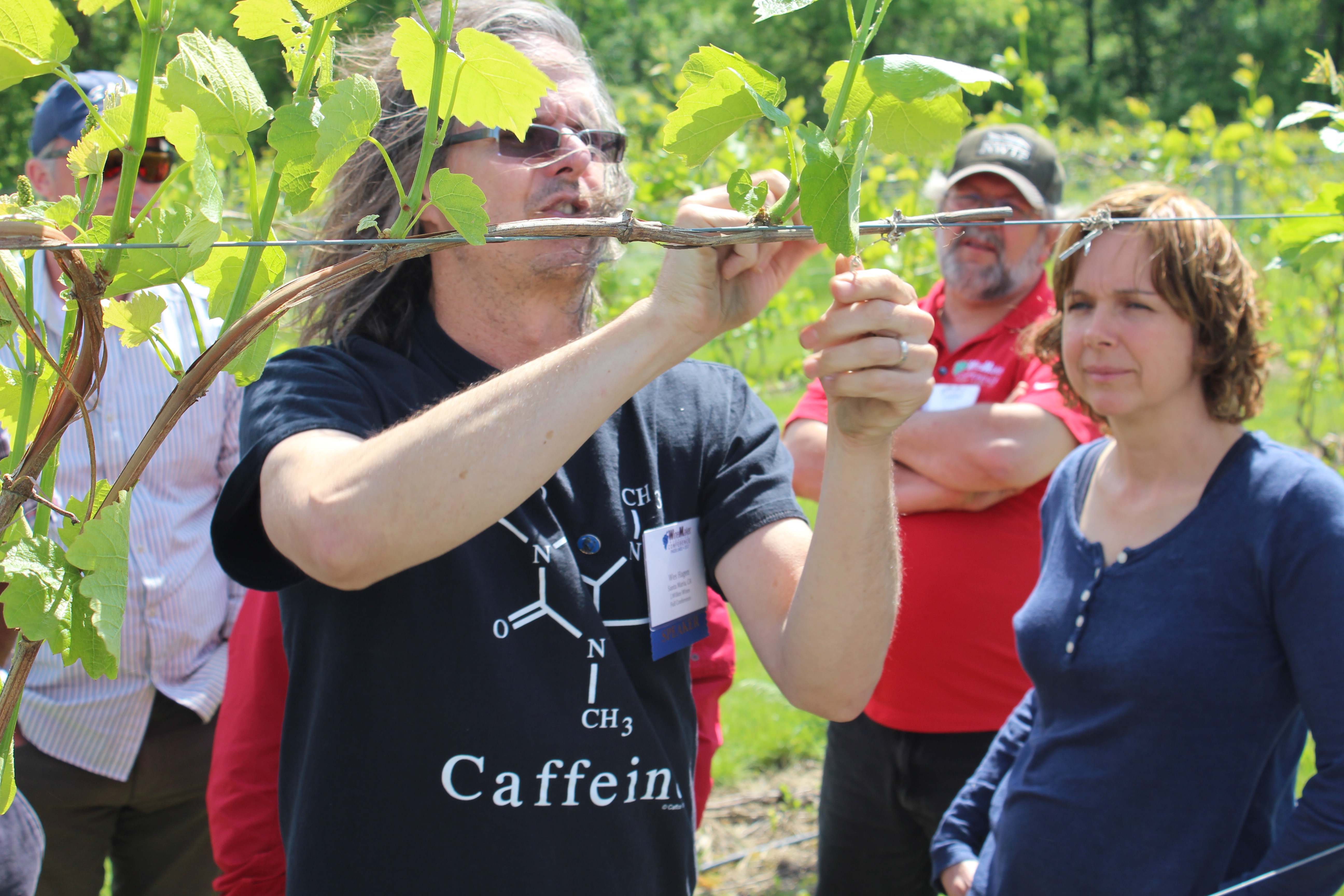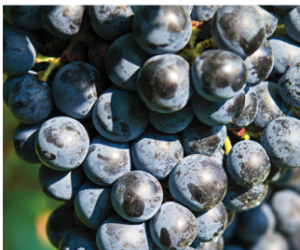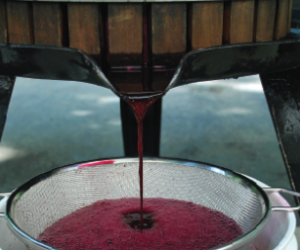 One truism in almost everything I do is this: By the end of any project, I am competent to start it properly. Nowhere is this more evident than in viticulture, and backyard vineyards are often a source of great disappointment because we knew so little when we first planted the vines.
One truism in almost everything I do is this: By the end of any project, I am competent to start it properly. Nowhere is this more evident than in viticulture, and backyard vineyards are often a source of great disappointment because we knew so little when we first planted the vines.
In the olden days of Europe, viticulture was a trade handed down from generation to generation. People worked the vineyard as children, teens and young adults, and took over management duties when their parents were too aged to do so efficiently. In fact, one of the reasons why they bore children was to provide labor on the family farms. The act of replanting a father’s vineyard was a time-trusted tradition, and those growers did so with an entire life of expertise, support and faith. Understanding the relationship of a family farm and the crops planted there was almost innate.
Today farming is anything but innate. You can’t text a vine (OMG, PinoNwah, y u h8 me?), there aren’t reality shows about vineyards (yet), and our culture of media, fast food and fast-everything has left pursuits like farming far behind. Farming is far too slow and deliberate to be extreme or sexy.
But things are changing. Even hipsters admit that sitting around a table filled with delicious foods, wine and friend for a few hours (without phones?!) is coming back into style. We are learning that re-engaging with human beings over a few small plates and delicious wine is far more meaningful and human than posting a picture of your dinner on Facebook.
In the pursuit of growing better and better wine in our backyards, I have assembled a very important list of 15 things I’ve learned about growing grapes.
1: Someone is always better at growing grapes than you, and you should make sure that person is your good friend.
Once I landed in the Santa Rita Hills of Northern Santa Barbara County, California, we quickly invited our winegrowing neighbors over for dinner and a few special bottles. Bryan Babcock became a valuable resource, and as new vineyards were planted around us, I even allowed a young winemaker to live at Clos Pepe while his family established themselves. We joined the group that would become the Sta. Rita Hills Winegrowers Alliance, and I dined and chatted with the stakeholders and pioneers of the region. I took Jeff Newton, the best viticulturist on the Central Coast, to lunches and dinners and asked lots and lots of questions. When I attended extension classes at UC-Davis or Cal State Fresno, I hung out after class and got to know the professors so I could email or call them when I had issues. Locate the experts in your areas, buy and taste their wines, attend their winemaking and grape growing classes and show genuine interest and passion.
2: Every hour of pre-plant research will save at least 100 hours of labor once the vineyard is planted.
You will have to get out of that chair, off the Internet and get your shoes dirty. Googling “Home Vineyard” will not get you growing grapes; unless you want to fail, learn from your lessons and then replant. Here’s how I would do it if I could go back in time: Get a degree in viticulture and enology. Attend trade tastings, farm and viticulture shows, work in experimental and university vineyards, take notes and develop my chops before I plant my own vineyard. Once I choose the right spot to plant, I would visit every vineyard within 100 miles, volunteer, pick grapes, prune and ask questions. Study viticulture texts and papers at night. Do soil and water samples and take them to professors or experts to determine anticipated vigor, soil issues, water requirements, cultivar and rootstock options. Have a professional visit before your planting, when you’re almost done planting and a few times during the first year of the vineyard’s life. Keep asking questions, keep studying and most importantly — walk the vineyard every day and keep a journal of everything you see. Start teaching another young viticulturist to pay it back and forward: we retain 40% of what we read, 60% of what we read and take notes on, but we remember 90% of what we teach another person.
3: Planting a few test vines is a smart move — and something that should be done a few years before the entire vineyard goes in.
My guess is that more than half of backyard vineyards fail and are abandoned in the first five years. Most fail because of neglect or ignorance, but some fail because the soil/climate cannot support varietal winegrape production. Try this: get two grapevines for about $10, plant them in the center of the area of where you’d like to plant, let the soil dry out between deep irrigations, and see how the vines react to their potential home. Restrict the vine to one growing shoot as it establishes itself. If you get less than 2 feet (0.6 m) of growth the first full season, you will likely have low vigor conditions, 3–6 feet (0.6–1.8 m) of growth moderate vigor, or more than 6 feet (1.8+ m) of vigor that may require a split canopy trellis like a lyre or quadrilateral. Watch for odd leaf symptoms, insect problems, animal pests — and keep a notebook with copious notes of anything you see happening to the vines!
4: Work/volunteer in a commercial vineyard for an entire year if you can, volunteer or paid, weekends or as often as you can.
Work in the vineyard nearest to your house, either a home vineyard or commercial vineyard and learn the physical, “kinesthetic” side of viticulture. As I mentioned earlier, YouTube or a book cannot teach you how much pressure it takes to snap a growing shoot on a cold morning. Balance in a vineyard is as much felt as seen, and it’s a much better idea to learn the difference in someone else’s vineyard. Try to keep your vine manipulation safe and beneficial, but everyone makes mistakes, and almost all of them can be fixed in a few days or weeks by a healthy, growing vine. As always, ask lots of questions. Also ask to do as many tasks as possible (shoot removal, suckering, shoot positioning, leaf removal, fine tuning, tractor, ATV, gopher/mole/squirrel eradication) and add value for the vineyard owner or manager.
5: Pruning cannot be taught in a book or on YouTube.
This falls in the same category as #2 and #4, but pruning is so important this needs its own category. Pruning a grapevine is the foundation for the entire vintage. Lazy, minimal or even drastic pruning can cause excessive shading, poor balance, over or under cropping, poor wine quality, or can even damage or kill a grapevine. Only a few hours working and cutting with a master pruner will give you the skillset and feel for pruning. For home growers and amateurs, I recommend sticking with trellised vines utilizing permanent cordon arms with spur positions spread about the width of a man’s hand (about 4 inches/10 cm). Find the best pruner in your state or county, track them down and ask if they take volunteers. If they say “no,” ask how much beer it would take to change their mind. If they don’t drink beer go straight for the throat and suggest single-malt Scotch. If they don’t drink, offer them a hundred bucks. This is really important stuff, and has to be learned over a number of full days pruning. Once you’ve pruned a vineyard, working multiple hours for at least a few weeks, you will never forget how to prune a vine. Also take special care in “resetting” your brain on each vine. I teach my guys to stop, look at the vine, imagine last year’s growth patterns as well as next year’s, see what the vine needs and then make it happen.
6: Balance and consistency in canopy management is the single most important viticultural step towards wine quality.
You must plant the vine varieties and rootstock that are best suited to make delicious wine in your locale, but other than that you need to manage your canopy between May and October.
This should be about 70% of your yearly work in the vineyard, so be prepared to use a lot of your late spring and summer to work in the vineyard and get that canopy tidy.
7: There are university extension and outreach programs to help most of you.
Most states recognize that grape growing and wine production are great ways to encourage tourism and the tax base. With commercial winegrapes being grown in all but a few states in the US, most state universities have some type of outreach program to help both pioneers and old salts grow better fruit. Here’s where you bust out your Google skills. Go now, I’ll wait. No programs? You can always request one from a local politician or university administrator.
8: Heavier equipment and the right tools are always worth the price.
If you can swing a small tractor in your vineyard, you should do everything you can to save your pennies and get one. There’s a reason that farming changed after the invention of the diesel-powered tractor. There are now a whole slew of small-sized tractors and specialized implements, and having the ability to run a real, PTO-powered sprayer, disc, French plow, or even leaf-plucking or pre-pruning attachments will revolutionize how much one person can do in your vineyard. Even ATV’s are available with PTO’s these days (a PTO is a rotating drive shaft that powers farm implements). Backpack sprayers are problematic, as they often do not have the pressure required to apply material past one leaf layer in the vines. Full coverage is key, which may mean two passes down each side of a row with a low-pressure sprayer. Buy heavy duty pruners, heavier trellising materials and hardware and high tension wire; I recommend buying the best of anything for installing a home vineyard so you only have to do it once per generation.
9: Keep sprays on schedule and never exceed the application rate on the label.
Use the heaviest spray rig you can afford or power, one that really gets high pressure spray into the vine’s canopy for coverage (see #8). If you want to check coverage, buy some agricultural dye (like Hi Light Blue Spray Indicator) and study the leaves and the green clusters under a magnifier after spraying to see how much coverage is being applied inside the canopy, directly to the fruit. You may be upset to see that only a few droplets are landing on the fruit, where they are most needed. Most fungicides available to home growers require coverage and contact to be efficient (stylet oil, sulfur, copper), so getting proper coverage is just as important as using proper, recommended application rates and dilutions. As far as scheduling, I recommend starting with the smallest interval recommended (every five to nine days means spray every five days to start), and if you get full control, add a day to the interval each year until you see disease return, then increase back to last year’s timing. Stylet oil and sulfur are elemental and your vines should not become resistant to those materials.
10: Try night harvesting. Harvesting at night improves wine quality and is very pleasant.
It seems like a huge pain to harvest at night, and you will need headlamps and some shop lights, but allow me to suggest that once you harvest and crush at night you will never pick in sunshine again. The fruit is cooler, the night is quiet and inviting. Trust me: try night harvest and you’ll never look back. Offer Irish coffee to your friends and make it sound like a party. It’s quite romantic (for the first 30 minutes).
11: Get help before the vineyard gets away from you.
A vineyard is like a business. It needs constant attention, love and hard work to thrive. And like a business, it’s easy to lose your focus and watch it whittle away to something that steals your money and efforts without giving anything back. A vineyard doesn’t understand that your kids need a summer trip to the shore. A vineyard doesn’t understand that you really need a weekend on the couch watching the NBA finals. A vineyard IS a child, and will react according to the attention and thoughtfulness applied to it. No one said growing wine would be easy. Suck it up and go take care of it. Try to do an hour every day to keep the weekend work from growing debilitating. Tired? There are probably a few neighborhood kids that could use some $10/hour physical labor to remind them that texting and TV don’t build character.
12: Don’t water or fertilize unless the vines need it.
If the vines grow in a balanced manner and have between 3-6 feet (0.9-1.8 m) of yearly cane growth and about 12-15 leaves per cluster, you don’t have to do a darn thing. European grapevines come from an area with about 30 inches (76 cm) of annual rainfall, and I usually use about 24 inches (61 cm) as an average for those that want to dry farm. Vines that stay stunted or the leaves are misshapen or jaundiced (yellow or creamy yellow/green) throughout the growing season may need a little fertilizer. Using a 15-15-15 formulation with micronutrients will ameliorate most deficiencies, but do not fertilize after veraison if you can avoid it, as extra nitrogen will slow ripening and dormancy.
13: Join a winegrowing group and carry your weight.
Many cities have home winegrowing hobbyist groups, and if yours doesn’t, think about starting one! Advertise on Craigslist or Facebook and you may be surprised how many home wine warriors emerge from the ether. Have monthly tasting parties where everyone brings a bagged home wine and a commercial wine, and taste them all blind — together or separate. Work together on pruning. Invite local commercial growers and winemakers to come and pour, sell and speak. Gain a reputation for being good buyers and winemakers will always make time for you. Ask to volunteer in local cellars and commercial vineyards. Offer to serve as President, Treasurer or Secretary to give yourself equity and influence.
14: Travel, visit vineyards, take notes and buy wine from good farmers.
You’ve heard this one before if you’ve read my articles, but this really does bear repeating. Travel is the currency of wine passion and education, and making friends with winemakers through supporting their businesses is key. I have a home winemaking friend who is also the Key Grip on the original NCIS television show. He buys Chardonnay almost every year from our vineyard, buys a few cases of wine every year, and we golf every few months. He’s friendly, funny, and he’s a great customer. He also bugs me every once in a while to evaluate a home wine, or asks for some SO2, or borrows some yeast, buys a barrel, etc. Instead of keeping me on a consultation retainer of $1000+/year, he buys $1,000 worth of wine annually and I’m always happy to help him with anything he needs. Find your expert, determine what he/she loves, and deliver!







